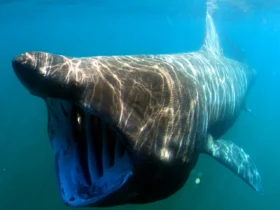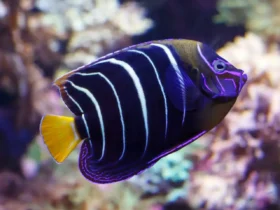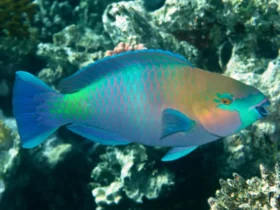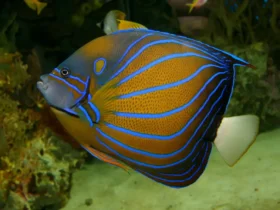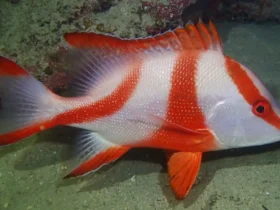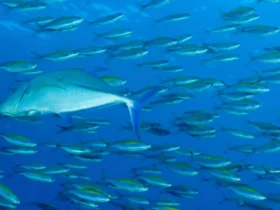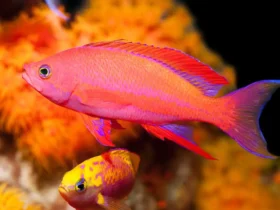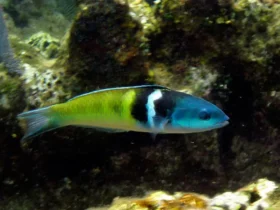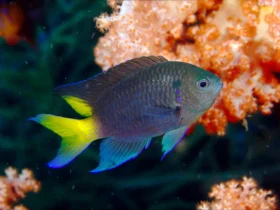The Royal Gramma (Gramma loreto) is a small but dazzling fish that graces the coral reefs of the Caribbean and Western Atlantic. Known for its vibrant colors and peaceful nature, this species captivates both experienced divers and aquarium enthusiasts. In this article, we will delve into the world of the Royal Gramma, exploring its appearance, behavior, habitat, and the importance of responsible reef conservation for its survival.

Appearance and Coloration
The Royal Gramma showcases a striking color pattern that instantly catches the eye. Its body is divided into two distinct sections—a bright purple anterior (front) and a sunny yellow posterior (rear). A thin dark line separates the two colors, creating a clear contrast that accentuates its beauty. This distinctive coloration serves as a visual warning to potential predators, indicating the fish’s venomous spines.
Habitat and Distribution
The Royal Gramma is predominantly found in the warm waters of the Caribbean Sea and the Western Atlantic Ocean, particularly around coral reefs. These fish inhabit the depths between 15 and 80 feet, seeking shelter in rocky crevices, coral branches, and caves. They are most commonly observed near reef walls and drop-offs, where they can find protection and ample food sources.

Behavior and Feeding
Despite their small size, Royal Grammas possess a confident and peaceful demeanor. They are known to be solitary or form small groups, and they establish territories within the reef. These fish are diurnal, meaning they are active during the day. They have a varied diet that includes small crustaceans, zooplankton, and tiny invertebrates. Their ability to dart in and out of coral structures allows them to efficiently capture their prey.
Breeding and Reproduction
The breeding habits of Royal Grammas in the wild are not well-documented, but they are known to be protogynous hermaphrodites. This means that some individuals start their lives as females and later transition to become males. In captivity, breeding programs have been successful, with pairs forming monogamous bonds and laying adhesive eggs on vertical surfaces. The males guard and aerate the eggs until they hatch, ensuring the survival of the next generation.
Conservation and Reef Protection
Like many coral reef species, the Royal Gramma faces significant challenges due to habitat destruction and degradation. Factors such as pollution, overfishing, and climate change can harm the delicate balance of the reef ecosystem and impact the survival of this colorful fish. Conservation efforts focused on protecting coral reefs, implementing sustainable fishing practices, and reducing pollution are vital for preserving the Royal Gramma and the biodiversity of the reef.

Aquarium Enthusiasts and Responsible Keeping
Due to its striking coloration and peaceful nature, the Royal Gramma has become a popular choice among saltwater aquarium enthusiasts. However, it is important to ensure responsible fishkeeping practices to support the health and well-being of these fish. Proper tank size, water quality, and a well-balanced diet are crucial considerations. Additionally, sourcing captive-bred individuals rather than wild-caught specimens helps reduce the impact on wild populations and supports sustainable aquarium practices.

The Royal Gramma is a stunning example of the vibrant and diverse life found in coral reef ecosystems. Its mesmerizing colors and peaceful behavior make it a prized sighting for divers and a sought-after addition to marine aquariums. However, as with all reef species, the survival of the Royal Gramma relies on the conservation of its habitat and the delicate balance of the reef ecosystem. By fostering responsible reef conservation practices, we can ensure the long-term preservation of this colorful jewel and the wonders of the coral reef for generations to come.
